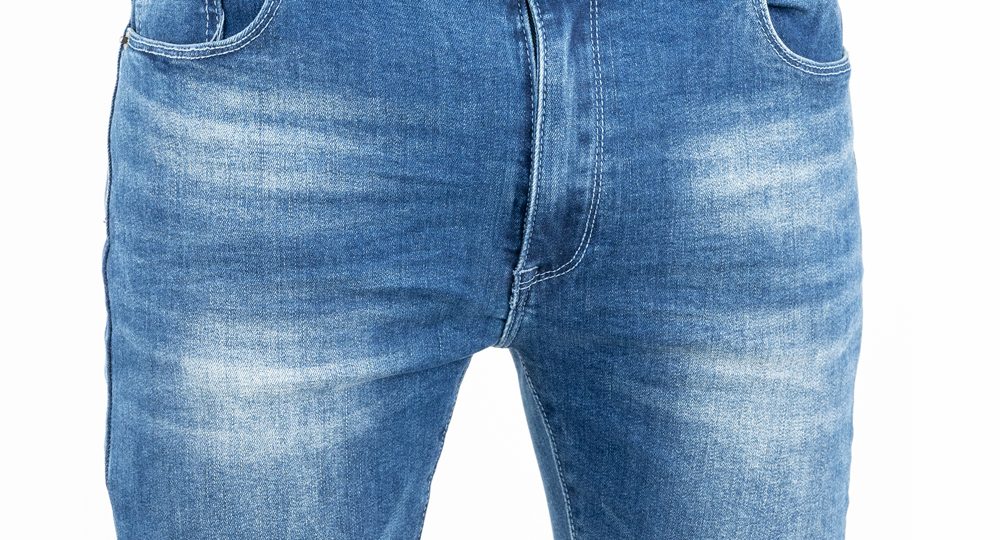
Eco-Friendly Jeans: Denim’s Green Evolution
The Environmental Impact of Traditional Denim Production
The traditional denim production process comes with a high environmental cost. Cotton, the primary material for denim, demands vast quantities of water for growth. To illustrate, producing a single pair of standard jeans may consume over 1,800 gallons of water. Additionally, conventional cotton farming heavily relies on chemicals such as fertilizers and pesticides. These substances can harm local ecosystems and pose risks to human health. The process doesn’t stop at the farm; it continues to be resource-intensive through dyeing and finishing, where more water and energy are used, with chemical waste often being released into the environment. Soil erosion is another significant concern. As demand for cotton soars, over-farming can lead to degraded lands, unable to support agriculture or maintain ecological balance.
Advancements in Sustainable Denim Manufacturing
The denim industry is actively seeking greener alternatives. Modern sustainable jeans now use less water and harmful chemicals. Innovative materials like organic cotton, lyocell, and hemp have emerged. These materials require significantly less water and pesticides compared to traditional cotton. Brands are opting for natural dyes and chemical-free processes. Dyeing and finishing techniques have evolved to reduce water and energy usage. Vertical integration in factories is another advancement. It streamlines the process, cutting down on shipping, packaging, and emissions. Technological innovations like laser and ozone treatments are becoming popular. They reduce the environmental footprint of the distressing process. Some companies even capture and recycle the water used in production. Overall, these advancements in materials, production processes, and technologies mark significant strides towards more sustainable denim manufacturing.

Key Players in the Eco-Friendly Denim Movement
The push for eco-friendly denim has introduced key players leading the movement. Brands now combine sustainability with style, addressing environmental concerns through innovative practices.
- AG Jeans: AG Jeans showcases its ‘The Jean of Tomorrow’ collection. They use organic cotton, lyocell, and hemp. AG replaces metal rivets with Tencel threads, promoting complete biodegradability.
- Frame: Frame’s ‘Pure Denim’ line stands out with 100% biodegradable organic cotton. Their process saves 98% of the water compared to traditional methods.
- Slvrlake: Adopting alternative materials, Slvrlake utilizes hemp for its cotton blend. Hemp grows fast without needing harmful chemicals or excessive water.
- E.L.V. Denim: E.L.V. Denim focuses on reworking vintage jeans. They also offer made-to-measure services, reducing waste and personalizing consumer experiences.
- DL1961: With a vertically integrated production, DL1961 uses eco-friendly dyes and organic cotton. They reduce emissions through minimized shipping and packaging needs.
- ?tica: ?tica holds high standards for impact, practices, and social responsibility. They prioritize labor standards and clean manufacturing processes.
- Bliss and Mischief: The label began by updating vintage jeans and has expanded to using deadstock denim. This echoes the practice of enhancing longevity and reducing waste.
These brands symbolize progress in the denim industry. They demonstrate that eco-friendly practices can coexist with fashion and consumer demands. As customers become more aware, they are likely to support brands with sustainable jeans in their core values. The move towards environmentally conscious production is not just a trend but a necessary shift for the industry’s future.

The Role of Organic and Biodegradable Materials
The shift to sustainable jeans heavily relies on innovative materials. Organic and biodegradable textiles are pivotal in this transformation. Here’s how they’re changing the game:
- Organic Cotton: Unlike conventional cotton, organic cotton eliminates harmful pesticides and fertilizers. It requires less water and promotes healthier ecosystems.
- Hemp: As a robust alternative, hemp needs minimal water and no chemicals to thrive. Its fibers are strong and wholly biodegradable.
- Lyocell: Derived from wood pulp, lyocell is biodegradable and has a minimal environmental footprint. It’s soft and durable, ideal for denim blends.
Brands like AG and Frame use these materials to create jeans that are friendlier to the planet. For example, AG’s ‘The Jean of Tomorrow’ emphasizes full biodegradability with a blend of organic cotton, lyocell, and hemp. Frame’s ‘Pure Denim’ collection taps into 100% biodegradable organic cotton which vastly cuts down water usage.
With these materials, the denim sector can significantly diminish its environmental impact. Consumers now have greener options without compromising on style or quality. The adoption of organic and biodegradable fabrics in sustainable jeans is a powerful step towards a cleaner industry.
Innovations in Water Reduction and Recycling Techniques
Reducing water use is key for sustainable jeans. The denim industry has seen major advancements here. New techniques and technologies aim to use less water throughout the production process.
Water-saving Dyeing Processes
The dyeing process traditionally uses a lot of water. Brands have developed methods that use less. Some now use foam-dyeing techniques, which can reduce water usage by over 90 percent. Others are switching to dry-dyeing methods. These methods also cut down on chemicals released into waterways.
Recycling Wastewater
Some denim manufacturers now have water recycling systems. These systems clean the water used in production. After cleaning, they reuse it. This approach can recycle up to 98 percent of the water in some factories. It’s a big change from traditional practices.
Innovative Wet Processing
Wet processing often needs a lot of water and energy. Lasers and ozone treatments have become alternatives. They create the desired denim look without using much water. These methods have less impact on the environment.
Eco-Friendly Washes
Waterless and eco-friendly washes are on the rise. They provide a way to finish jeans without wasting water. Using organic enzymes or laser technology, these washes are becoming more popular.
Overall, these innovations contribute significantly to the sustainability of jeans. They offer a path to reduced water use and a smaller environmental footprint for the industry.
The Rise of Vintage and Reworked Denim
The recycling of vintage denim is gaining momentum. More consumers and brands are discovering the value in reworked jeans. Vintage denim doesn’t need new resources, which saves water and reduces pollution.
Reworked denim has a unique appeal, too. It combines creativity and sustainability. Each piece is one-of-a-kind, with a history and character that can’t be replicated in new fabrics.
Brands Championing Vintage Denim
E.L.V. Denim stands out in this space. They create new jeans from old ones. The result is fashionable and less wasteful. The brand takes unwanted jeans, often damaged, and transforms them into trendy pieces.
Bliss and Mischief are also making waves. They began by updating old jeans with fresh designs. Now, they use deadstock denim to create new clothes. They show that you can be stylish and eco-conscious at the same time.
The Benefits of Vintage and Reworked Denim
Choosing vintage cuts down on waste. It’s a simple yet effective way to live greener. When denim gets a second life, it means we’re using fewer new materials. This reduces the strain on the environment.
Wearing reworked denim also supports small businesses. Many of these brands are independents with strong ethical values. They focus on craftsmanship and responsible production.
Personalizing Your Denim
Some brands offer custom-fitting services. This means less overproduction and fewer unwanted items. Customers can get jeans tailored to their preferences, which often leads to longer wear and more love for each piece.
Reworked denim is changing the industry. It brings new life to old jeans and makes fashion more eco-friendly. As consumers become more aware, the demand for unique, sustainable jeans is likely to grow.

Consumer Choices and the Future of Sustainable Jeans
When it comes to fashion, consumers hold power. Their choices can drive change in the denim industry. People want stylish jeans that also keep the environment in mind. As more shoppers opt for eco-friendly options, the market adjusts. Brands like AG, Frame, and E.L.V. Denim are examples. They make sustainable jeans that cater to this growing demand. Consumers are learning the effects of their purchases. They know the impact of water use, chemical dyes, and cotton farming. With this knowledge, they’re choosing brands that care about eco-friendly practices.
Ethical consumption is now a key factor for many. Shoppers are selecting pieces that will last longer and are timeless. They prefer quality over quantity. This shift helps reduce waste and excessive production. It also fuels the interest in vintage and reworked denim. These options provide a unique style without new resources. Customer awareness is on the rise. They are asking for transparency and sustainability. They want to know where their jeans come from and how they are made. Consumers use their buying power to support brands with good practices.
The future of jeans looks green. It is shaped by customer choices and values. As demand for sustainable options grows, more brands will join the move. They will adopt greener materials and methods. The industry’s focus will likely turn to longevity and impact. This means better jeans for us and less harm to the planet. The trend for sustainable jeans is not just a passing phase. It is becoming what customers expect and what the industry aims to deliver.
How the Industry is Addressing Sustainable Practices
The denim industry is taking big steps to be more eco-friendly. Change starts with the materials used to make jeans. Organic cotton, hemp, and lyocell are in the spotlight. These use less water and avoid harsh chemicals. Companies are not just swapping old materials for new ones. They’re also changing how they make jeans. New dyeing processes save water and cut down on waste. Wastewater is now often cleaned and reused in the production cycle. Plus, lasers and ozone treatments offer low-water options for finishing jeans. This means less pollution and energy use.
Alongside these changes, brands are thinking about the full lifecycle of denim. They aim for jeans to be biodegradable or recycled after use. This means less waste in landfills. Other brands focus on reworking vintage denim. They breathe new life into old jeans, saving resources and reducing waste. Custom-fit options are growing, too. This means less overproduction and better fitting jeans for customers.
The industry is not just making changes on its own. Consumers push for more sustainable practices. They choose eco-friendly jeans, pushing brands to do better. Transparency is key. Customers want to know how and where their jeans are made. As demands for sustainability grow, more denim brands are likely to join the movement. They will need to use better practices and greener materials. This shift is changing the denim industry for good. It’s not just a trend. It’s the way forward for jeans to be kinder to the planet.
